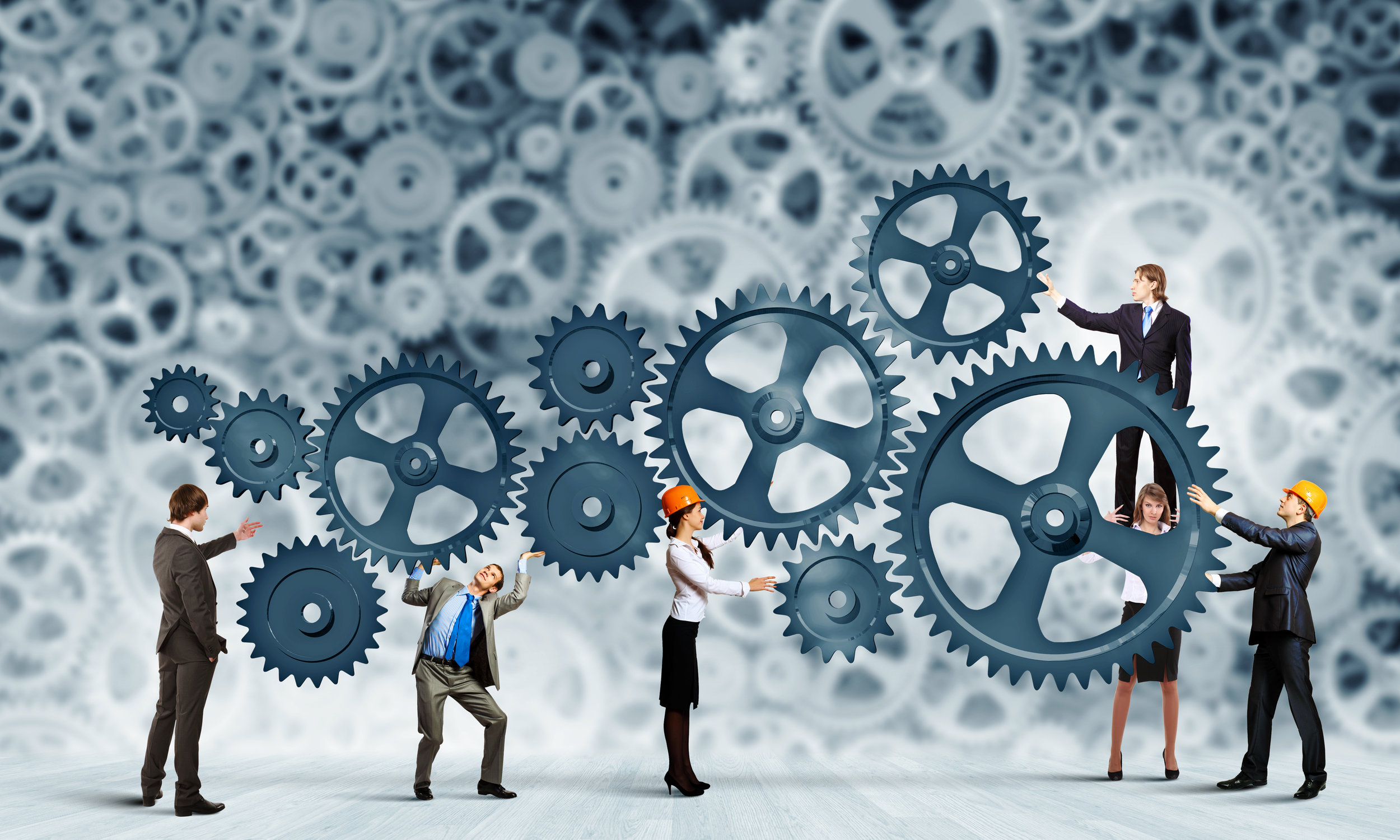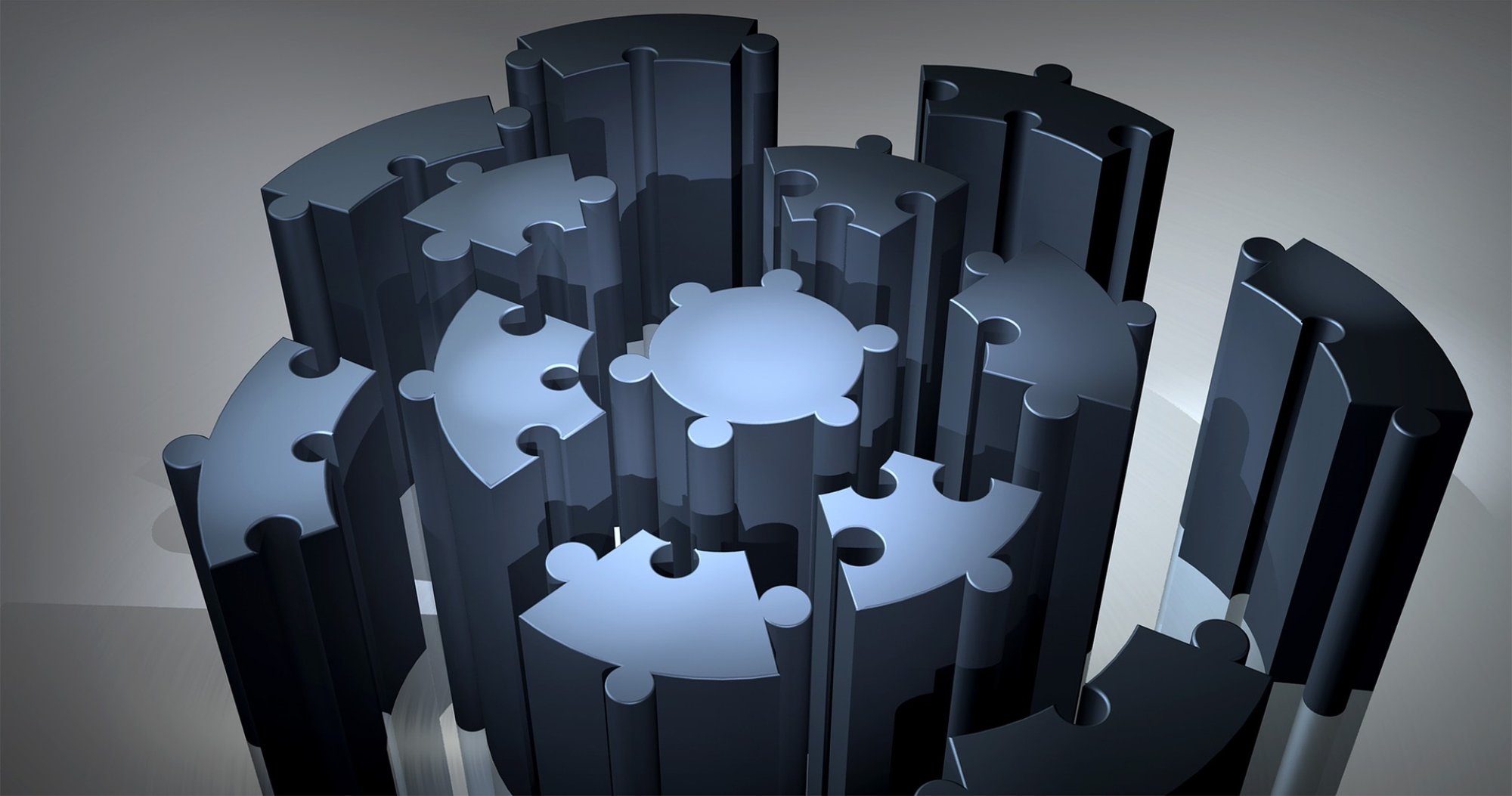Author: Joshua Seedman
Introduction
9-STEP CUSTOMER EXPERIENCE JOURNEY
Exhibit 1 (Click to Enlarge)
The days of being successful on merely a differentiated product are over. Without offering a world-class customer experience companies will see stagnant growth. Thanks to digital disruption, traditional customers have transitioned from being a connected consumer, to an empowered consumer, and finally to Consumer-in-Chief. However, many organizations forget that the real CEO of the enterprise is not an individual leader but rather the consumer. Simply, customers are now a more integral part of the enterprise than ever before. Compounding this new landscape, customer's needs are changing at a rapid speed with expectations continually increasing. In addition, customers have a vast array of options in today's market making loyalty a thing of the past. Thus, if consumer's expectations are not only met but also exceeded there are many other companies standing in line for the same customer's business. Consequently, when it comes to customer experience companies must disrupt themselves before others do; otherwise, customer engagement will continually decrease as a byproduct of subpar service excellence and innovation.
CUSTOMER EXPERIENCE GAP
Exhibit 2 (Click to Enlarge)
This resonates more deeply than ever because disruption across B2C retail, with Amazon leading the way, has permanently changed customer’s shopping expectations across all industries and in both the B2C and B2B spaces. In addition, this disruption has exponentially increased the speed of innovation cycles across service excellence. Indeed, customers now make no differentiation between buying, as world-class customer experience is industry agnostic. To the customer, shopping is shopping – plain and simple. This has left a large “customer experience gap” between what customers expect and what they actually receive, equating to a poor customer experience and significant value erosion across most organizations (See Exhibit 2).
CUSTOMER EXPERIENCE QUADRANT™
Exhibit 3 (Click to Enlarge)
Finally, and compounding the aforementioned customer landscape transition, most companies forget that world-class customer service begins and ends with its employees. As a consequence, many firms spend endless capital on improving capabilities such as digital, branding, marketing, sales, and product R&D with the hope that this will close the "customer experience gap." However, such investments often drive little to no impact because without first creating high employee engagement, which is the gateway to a world-class customer experience, every other customer initiative will fail. To overcome all the aforementioned challenges across this newly formed customer landscape, this article proposes a holistic 3 phase | 9-step customer experience transformation framework (See Exhibit 1). This framework, when leveraged appropriately, will help any enterprise in creating a sustainable service excellence ecosystem that not only meets but also exceeds customer expectations.
Transformation Benefits
CUSTOMER EXPERIENCE TRANSFORMATION BENEFITS
Exhibit 4 (Click to Enlarge)
The proposed customer experience transformation covers the vast array of key revenue and cost drivers associated with either top or bottom-quartile customer service performance (See Exhibits 3 and 4). By transformation's end the enterprise should witness a healthy and viable service excellence ecosystem that creates significant top and bottom line growth. Several of these benefits include (See Exhibit 4):
Benefit #1. CUSTOMER
Pain point free customer journey that not only meets but also exceeds customer expectations thereby increasing customer engagement. This engagement dominos into improved customer loyalty, greater advocacy, increased NPS, greater number of recommendations, and significantly higher customer lifetime value.
Benefit #2. EMPLOYEE
An employee first mindset that creates a culture of empowerment and inspiration thereby improving employee engagement. This in turn lowers employee turnover, increases productivity, improves innovation, and increases revenue and margin per employee.
Benefit #3. ENTERPRISE
Customer-centric enterprise focus which drives (1) greater cross-functional collaboration from defined top to bottom alignment, (2) a distinctive digital ecosystem for driving service excellence, (3) a culture of innovation and empowerment, (4) 360º customer journey analysis capabilities, and (5) omnichannel synchronization. These benefits not only bring sustained top and bottom line growth but also an embedded competitive advantage with high barriers to entry.
3 Phase | 9-Step Framework
- Customer Experience Transformation Overview -
“Customers have a vast array of options making loyalty a thing of the past. If expectations are not only met but also exceeded there are many other companies standing in line for that same customer’s business. ”
Many organizations often undertake customer experience transformations via a narrow and siloed approach. Unfortunately, this methodology is highly ineffective in creating a distinctive customer experience ecosystem. Instead, successful customer transformations are holistic in nature and require enterprise alignment and world class cross-functional collaboration. Only then can an embedded and sustainable enterprise customer centric mindset be achieved that creates both short and long-term customer benefits.
9-STEP CUSTOMER EXPERIENCE JOURNEY
Exhibit 5 (Click to Enlarge)
This article's proposed 9-step transformation framework covers the vast array of key trigger points that are vital yet often overlooked in customer experience transformations. Specifically, this nine-step framework includes (1) employee engagement, (2) cross-functional collaboration, (3) capability building, (4) customer centric enterprise focus, (5) digital transformation, (6) omnichannel synchronization, (7) 360° customer journey analysis, (8) enterprise scorecard, and (9) transformation pulse tracking (See Exhibit 5 and the following article sections for a detailed overview of each framework step).
“When it comes to customer experience companies must disrupt themselves before others do; otherwise, customer engagement will continually decrease as a byproduct of subpar service excellence and innovation.”
In its simplest form, the aforementioned nine-step framework is distilled into the following three key phases: (1) employee engagement, (2) enterprise and functional capabilities, and (3) enterprise alignment and pulse keeping (See Exhibit 1). Typically, most companies focus on only a fraction of one or two of these core issues, often overlooking the appropriate steps necessary to be distinctive at each phase of the customer journey. As a byproduct, enterprise gaps and customer pain points are often more abundant than wow customer experiences. Instead, by transforming the customer experience function across these three core phases and ultimately the accompanying nine-steps, the entire enterprise will radically transform itself and close the customer experience gap by exceeding rather than simply meeting customer expectations (See Exhibit 2).
- PHASE 1 | STEP 1 -
Employee Engagement
If a company wants raving customers it first needs raving employees. Simply, customer loyalty and employee advocacy are highly correlated. Thus, world-class customer service begins and ends with employees. However, those that spend the most time with the customer (i.e., frontline employees) are generally an afterthought, equating to significant pain points along the customer journey. Organizations must create employees that will be inspired and engaged to create those “wow” moments for customers because the company first created those "wow" moments for its employees. This requires companies to look internally at employee, cultural, and organizational health transformations as the gateway to customer success. Click HERE for additional information on "why" employee engagement is key to customer success and click HERE for details on "how" to improve employee engagement.
- PHASE 1 | STEP 2 -
Cross-Functional Collaboration
Without distinctive cross-functional collaboration, an organization experiences “customer amnesia™” because each time a customer interacts with a different business unit or channel the last interaction is unknown or forgotten. Unfortunately, internal company competition is often fiercer than external competition. This produces silos, misaligned incentives, and data hoarding with each business unit typically having a different view of the customer. Thus, service excellence can only be achieved by mitigating these internal gaps via seamless cross-functional collaboration. Otherwise, internal enterprise pain points domino into many customer pain points, all of which add to the value destructive “customer amnesia™” spectrum. Click HERE to read more on driving impactful cross-functional collaboration.
- PHASE 1 | STEP 3 -
Capability Building
For every $1 invested in employee engagement and training an up to $4 ROI can be seen with customers. According to Gallup, only 30 percent of employees are engaged in their work. With an up to 4X ROI the investment decision is simple. However, most companies spend far too little in employee capability building and, even when they do invest, training engagement is low, driving a poor ROI. Simply, not all capability building investments are created equal. To drive enterprise wide employee engagement one first needs capability building that is also engaging, combining the best of classroom, hands-on, and customized experiential learnings. In turn, employees will sell more because they are equipped to create "wow" customer experiences. Click HERE to read more on implementing effective capability building.
- PHASE 2 | STEP 1 -
Customer Centric Enterprise Focus
Most companies have a "customer experience gap" which is the difference between what customers expect and what they actually experience throughout their journey (See Exhibit 2). A byproduct of this customer experience gap is declining customer loyalty, lifetime value, and advocacy. In an effort to combat this gap, many perform siloed investments via marketing, sales, and digital initiatives instead of actually fixing the root problem – a lack of enterprise customer centricity. Simply, each employee and BU, whether in a customer facing role or not, must understand the needs, expectations, and enterprise KPI’s of the customer. Only once this enterprise customer centric focus and alignment takes root can service excellence at each touch point transpire. Click HERE to read more about the "customer experience gap™."
- PHASE 2 | STEP 2 -
Digital at Scale
Digital disruption across B2C retail, with Amazon leading the way, has forever shifted customer’s expectations across all industries and channels. Simply, world-class customer experience is industry agnostic. To the customer, shopping is shopping with service excellence now table stakes. In addition, the customer is becoming more sophisticated and will continue expecting more from each interaction with a brand. It is therefore imperative to create a holistic digital ecosystem that allows companies to scale up quickly in keeping pace with the ever-quickening innovation and customer expectation cycles. The byproduct - a digital ecosystem that helps exceed rather than merely meet customer expectations in both the short and long-term. Click HERE to read more on driving successful digital transformations.
- PHASE 2 | STEP 3 -
Omnichannel Synchronization
Customers expect seamless experiences regardless of where they are in the purchasing cycle. This has increased pressure to move beyond a multi-channel and/or multi-functional approach to drive an omnichannel-like experience that ensures mitigation of customer amnesia™ (See Step 2). Thanks to digital disruption, an omnichannel-like mindset is relevant to all industries, not just retail. Simply, customers expect not only a great product but also “wow” experiences, convenience, and speed no matter where in the journey or purchasing cycle. Companies should leverage the B2C retail template in adopting best enterprise and digital practices that will aid in providing a streamline, fluid customer journey that is omnichannel-like in its approach and benefits. Click HERE for additional readings on omnichannel synchronization.
- PHASE 3 | STEP 1 -
360° Customer Journey Analysis
Companies often only give each step in the customer journey the rigor it deserves once it actually arrives at a customer pain point. Simply, a linear trajectory is followed which is equivalent to someone walking along a sidewalk with tunnel vision. They only see what is ahead and course correct once they arrive at a problem. This stems from a “multi-stage” instead of “omni-stage” customer journey mindset. Instead, every facet of the customer journey should be considered. Instead of thinking linearly, one must think about the customer journey from a “360° omni-stage™” view via (1) past learnings, (2) current gaps, and (3) future issues that could arise. This 360°omni-stage lens ensures that at any point in time companies are analyzing the entire customer journey via a 360° view. Click HERE to read more on a "360° omni-stage™ analysis and decision-making mindset.
- PHASE 3 | STEP 2 -
Enterprise Scorecard
Customer success hinges on having an enterprise scorecard whereby all the business units and employees within a company have the same KPI’s. This ensures a true team effort versus silo hoarding and misaligned incentives that ultimately create customer pain points. This stems from that fact that leadership will not get the company where it needs to go unless it brings laser-like focus. Along with that focus, everyone must be incentivized to get to the company’s aspirational goal in an expedient fashion because today’s winners are not those with size but rather those with speed. However, if each business unit is incentivized differently it becomes easy to lose focus on the real goal - creating employee and customer engagement. If these two take place financial results will follow. Click HERE to read more on implementing an enterprise scorecard.
- PHASE 3 | STEP 3 -
Enterprise Pulse Keeping
A company must track in real time how its customer experience initiatives are performing. This can be accomplished via constant employee and customer surveys such as eNPS and NPS (Employee/Net Promoter Scores). Simply, a firm must keep a constant pulse on both its employees and customers because there is a strong correlation between employee and customer advocacy. Thus, employee engagement can predict whether customers become detractors or advocates. Consequently, tracking customers and employees ensures pulse keeping on the two most highly correlated data points for service excellence. Such an approach, unlike an OHI which may be done annually with the results not coming in for months, provide real-time input for constant enterprise course correction. Click HERE to read more on creating and implementing enterprise pulse keeping and click HERE to read more on pulse keeping with the "customer experience quadrant™."
Conclusion
9-STEP CUSTOMER EXPERIENCE JOURNEY
Exhibit 6 (Click to Enlarge)
Effective customer experience transformations drive revenue growth and profits by tackling head on the key levers that impact service excellence. With that said, any transformation of this magnitude requires enterprise alignment and cross-functional collaboration to drive the greatest impact. Simply, these transformations are holistic in nature and require alignment from the top-down to drive an enterprise customer centric mindset that in turns drives a world-class customer experience. The proposed 3 phase | 9 step customer experience transformation framework (See Exhibit 6) can help any enterprise in achieving such a distinctive service excellence ecosystem that not only meets but also exceeds customer expectations in both the short and long-term.
ABOUT THE AUTHOR
Joshua Seedman is the founder and chairman of PNI Consulting, a management consulting firm that specializes in global transformations. He has over 20 years of operating and general management experience with expertise in organizational transformations, customer experience, employee engagement, digital transformations, sales & marketing, operational turnarounds, culture/change management, and high-stakes negotiations. His experience includes executive roles within F500 companies, top-tier consulting leadership (McKinsey & Company), over 10 years of global P&L responsibility, and corporate lawyer (Davis Polk & Wardwell). He received his MBA from Kellogg School of Management and his J.D. (cum laude) from Northwestern University School of Law.





































